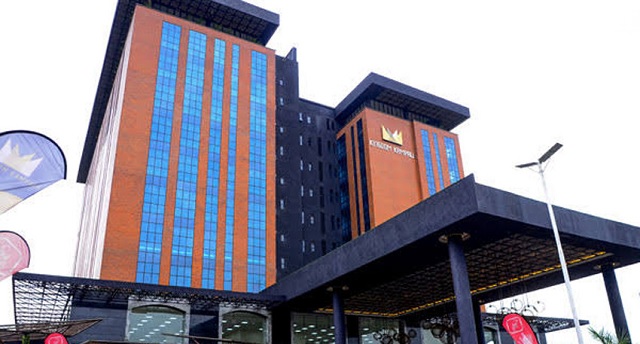
Commuter towns on the outskirts of the city are gaining traction, as more people opt for a quieter, calmer, and more suburban living
Kampala, Uganda | THE INDEPENDENT | Rental rates in Kampala have increased by up to 12% across various property segments, reflecting increased demand attributed to improved economic activities, according to Knight Frank, a leading property management firm.
The H2 2023 report indicates a substantial increase in rental rates, with Grade A and Grade AB office spaces experiencing a notable surge of 10% and 12%, reaching USD 16.5 and USD 15 per square meter, respectively, compared to the previous year.
Prime residential properties have seen a 4% rise in average monthly rents for 2-bedroom apartments, while 3-bedroom apartment rents increased by 1% on a year-on-year basis. This growth is linked to the introduction of prime apartment units with larger living spaces and enhanced amenities, commanding higher rates in the market.
On the other hand, the industrial sector’s rental rates remained stable, ranging between USD 3 to USD 7 per square meter for warehouse space, contingent on size, location, and other factors. The demand for industrial space has been buoyed by business growth, particularly in sectors such as automotive, manufacturing, interior design, pest control, pharmaceuticals, and beverages.
The report notes a shift in preference among industrial players, with more opting to purchase their premises rather than rent, driven by the need for operational control, long-term growth plans, and the availability of capital.
The report notes that there has been a general improvement in occupancy for Grade A and AB properties across the board with vacancy rates reducing by 1% during the period under review.
Tenants seeking units under 200sqm, accounted for 47% of inquiries as demand for larger spaces diminished significantly, with only 29% and 24% seeking spaces in the 200-1,000sqm and above 1,000sqm segments, respectively. This is a result of reduced demand from Foreign Direct Investments and the Oil and Gas sector which had driven demand for large office space over the past years.
Core sectors like consultancy services, NGOs, finance, health sciences, and IT, remain strong but newer entrants in the renewable energy sector and lottery companies are emerging.
Similarly, client portfolio adjustments are driving increased property sales, be it for portfolio optimisation, sector diversification, or capitalizing on property value appreciation.
Interestingly, 75% of inquiries prioritized renting over buying, suggesting a preference for flexibility in this dynamic market.
The average selling and letting period continue to vary depending on factors such as market demand, location, property type, and economic conditions, with Grade A offices in prime locations like Nakasero, Kololo, and Bugolobi experiencing high demand resulting in a short letting period of 3-6 months while those in less prime areas recording long letting periods of over 6 months.
For the prime residential properties, the preferred prime residential accommodation type, especially among the senior expatriate staff remains standalone houses or houses in a gated community. However, there is limited choice in this segment, given the short supply of detached houses in prime suburbs.
Most of the prime residential suburbs housing standalone houses have been gazetted as commercial areas and redeveloped with modern apartment blocks to take advantage of densification and economies of scale from increased rental incomes and reduced operational costs from multi-let units. In turn, the secondary residential areas of Mbuya, Munyonyo, Muyenga, and Bugolobi, are gaining popularity as an alternative.
The prime residential pipeline activity remains relatively high with approximately 600 new units expected on the market in the areas of Nakasero, Kololo, and Naguru in the next 12-24 months representing a 14% increase in pipeline activity as compared to H2 2022.
Interestingly, commuter towns on the outskirts of Kampala city are gaining traction, as more people opt for a quieter, calmer, and more suburban living. Lured by more affordable land, the potential for capital appreciation, improved access to amenities and services, and improved road infrastructure, residents are willing to endure longer commute times to their places of work in the CBD.
Meanwhile, the growing demand for industrial space mainly derived from Agro-processing, renewable energy, construction, cold storage, and technology sectors has led some landlords to increase their asking rental rates, especially within the Traditional Industrial area.
“This has not been favourable for most tenants as they continue to drive harder bargains for the same. Landlords are increasingly seeking longer lease commitments from tenants, to maintain stable and predictable cash flows. However, tenants continue to have cost concerns with most preferring favourable lease terms and competitive rental rates,” the report notes adding that most tenants are prioritizing proximity to suppliers, customers, and transportation hubs in a bid to improve operational efficiency.
The report notes that construction activities were observed in various industrial areas including a long Mulwana road, in which a mixed-use industrial property is under construction with approximately 16,340sqm, Enterprise Park in Nakawa- Mbuya that has over 2000sqm coming onto the market in 2024 as well as multiple units coming up in Namanve, Nalukolongo and Luzira industrial areas. In total, over 40,000 sqm of warehouse space is expected on the market in 2024 for both rent and sale.
Future outlook
Looking ahead, commuter towns on the outskirts of Kampala are emerging as attractive options for those seeking a quieter suburban lifestyle. These towns, including Gayaza, Bulenga, Seeta, Kiwenda, Kiti, Nabbingo, Nabweru, Matugga, and Buwambo, are witnessing increased interest due to more affordable land, potential for capital appreciation, improved amenities, and enhanced road infrastructure.
The industrial sector’s growth is expected to continue, fueled by agro-processing, renewable energy, construction, cold storage, and technology sectors. However, challenges such as delays in certification processes by the Uganda National Bureau of Standards may impact new entrants.
 The Independent Uganda: You get the Truth we Pay the Price
The Independent Uganda: You get the Truth we Pay the Price


